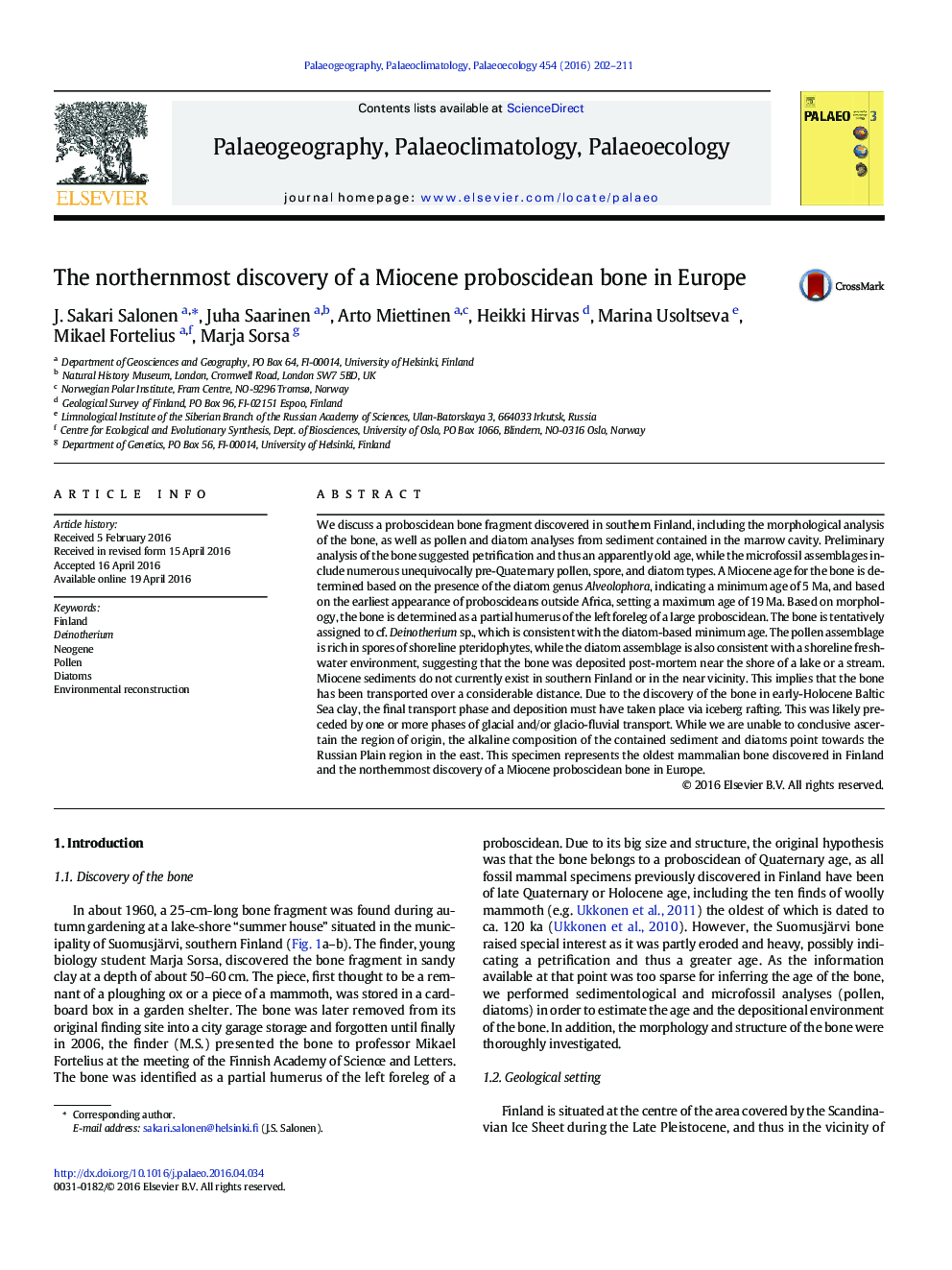| کد مقاله | کد نشریه | سال انتشار | مقاله انگلیسی | نسخه تمام متن |
|---|---|---|---|---|
| 4465608 | 1622137 | 2016 | 10 صفحه PDF | دانلود رایگان |
• A proboscid bone fragment of Miocene age (19–5 Ma) discovered in south Finland
• Identified as a partial humerus, tentatively assigned to cf. Deinotherium sp.
• Northernmost Miocene proboscidean fossil in Europe, oldest mammal fossil in Finland
• Pollen and diatoms from marrow cavity used to constrain age and living environment
• Pollen and diatoms indicate a riparian environment and a subtropical climate
We discuss a proboscidean bone fragment discovered in southern Finland, including the morphological analysis of the bone, as well as pollen and diatom analyses from sediment contained in the marrow cavity. Preliminary analysis of the bone suggested petrification and thus an apparently old age, while the microfossil assemblages include numerous unequivocally pre-Quaternary pollen, spore, and diatom types. A Miocene age for the bone is determined based on the presence of the diatom genus Alveolophora, indicating a minimum age of 5 Ma, and based on the earliest appearance of proboscideans outside Africa, setting a maximum age of 19 Ma. Based on morphology, the bone is determined as a partial humerus of the left foreleg of a large proboscidean. The bone is tentatively assigned to cf. Deinotherium sp., which is consistent with the diatom-based minimum age. The pollen assemblage is rich in spores of shoreline pteridophytes, while the diatom assemblage is also consistent with a shoreline freshwater environment, suggesting that the bone was deposited post-mortem near the shore of a lake or a stream. Miocene sediments do not currently exist in southern Finland or in the near vicinity. This implies that the bone has been transported over a considerable distance. Due to the discovery of the bone in early-Holocene Baltic Sea clay, the final transport phase and deposition must have taken place via iceberg rafting. This was likely preceded by one or more phases of glacial and/or glacio-fluvial transport. While we are unable to conclusive ascertain the region of origin, the alkaline composition of the contained sediment and diatoms point towards the Russian Plain region in the east. This specimen represents the oldest mammalian bone discovered in Finland and the northernmost discovery of a Miocene proboscidean bone in Europe.
Journal: Palaeogeography, Palaeoclimatology, Palaeoecology - Volume 454, 15 July 2016, Pages 202–211
